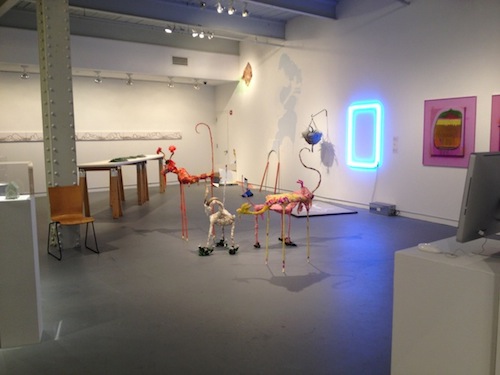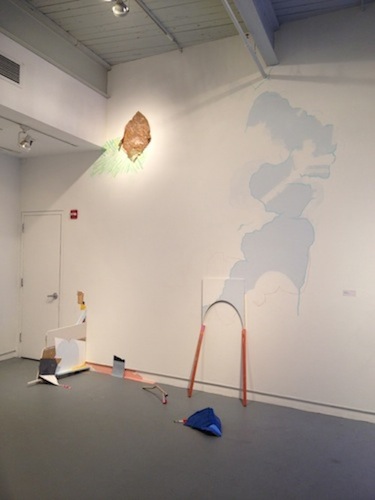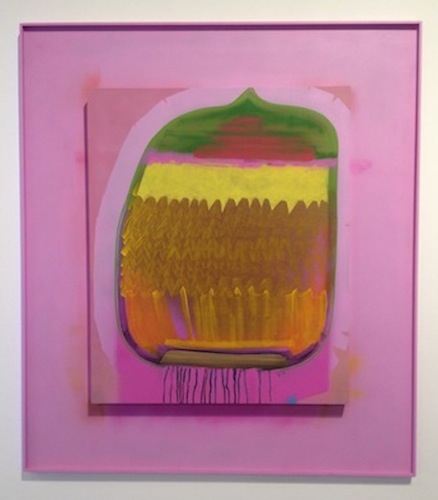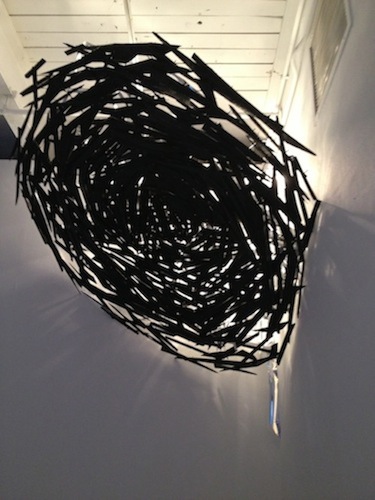Sure, it’s good. The Sondheim Semi-Finalist Exhibition is always good. In fact, it is the only exhibit that every artist I know says ‘is way better than the finalist show’ every single year. Really. This show is easy to like because it is both highly selective and highly inclusive. On the whole, the works included are quality, and there’s a little something for everyone. And, at least a few of your friends are in this show and, of course, they should have been picked as finalists.
For all those dismayed by a myopic Sondheim Finalist Exhibition heavy on social justice and photojournalism, this year’s exhibit of Sondheim Semi-Finalists in MICA’s Meyerhoff and Decker Galleries will soothe what ails. The sprawling exhibit of close to fifty Baltimore and DC-based artists is heavy on sculpture, installation, video, and even paintings and the few photojournalistic pieces present blend in harmoniously without dominating the conversation. Although the show is overhung and some works are painfully crowded, the diversity of media, expression, and content in this exhibition presents a solid and accurate offering of much of the best of the area’s contemporary art.
I am not writing this to dispute the quality of any of the works in this show, but I was struck by a weird and disturbing thought when viewing this year’s exhibition. On the whole, both the exhibit of finalists and semi-finalists leans towards younger artists, which is typical for Baltimore, and worth consideration. Although I did not look up birth records for every participant, the average age in this show seems to hover around thirty. Why is this worth mentioning? Maybe this is no big deal and all cutting edge jurors select work by younger artists and recent MFA graduates. OR possibly this show is symptomatic of a larger and looming problem. Does this selection say anything about the health of the arts community here? What does this exhibit teach artists about their future prospects in this town?
It is possible that this show is a reflection of the actual demographics of Baltimore’s visual art community, replentished each year by a crop of recent MICA graduates. In this case, we must assume that as local artists age, they move away from Baltimore and art-making for a variety of reasons. This sounds bad, but could be much worse. A young community is full of energy and growth, and perpetually exciting. However, a perpetually growing community is also like an escalator, constantly moving up but never getting anywhere. Taken literally, a ‘by the young for the young’ art scene, reinforced by this show, will eventually exclude the very same artists it currently celebrates, if they decide to stick around, which doesn’t seem likely.
In the unofficial ‘best of the best’ annual exhibit, why are so few ‘mature’ Baltimore artists included? Where do the young artists go after a certain number of years? Do they leave town sometime around middle age in search of jobs and security? Or, is it possible that the older and more established artists don’t bother to apply for the Sondheim Prize because they are too busy planning retrospectives and at summer residencies in Europe? If you attended more than one of the Artscape satellite exhibitions, you will notice that my second assumption on self-selecting non-participation is not the case. Many of the additional shows curated by locals feature the work of mature artists. So what does this mean?
Just for the record, I am not knocking anyone for being born in the 1980’s or later. And I have high esteem and respect for the artists and works in this exhibit, lovingly pictured below. However, I am curious about the implications of the Sondheim Prize and exhibits for the health and success of the local art community. I am glad that the Sondheim jurors are highly credible world class professionals, but I do question the sustainability of an art career in Baltimore and the value we, as a community, place on the new and the next.
In a historical era which supposedly has no over-riding art ‘isms,’ fawning over the newest thing is a double-edged, razor sharp sword. While it succinctly focuses our attention on challenge and innovation, it ignores a number of equally valid and longterm conversations that might actually teach us something about sustainability.
Photos below of my favorite works in the Sondheim Semi-Finalist Exhibition at MICA’s Meyerhoff and Decker galleries. This exhibit is up through August 4, 2013.
Dustin Carlson’s Land of the Free
Pink Loves Consent by FORCE (Hannah Brancato and Rebecca Nagle) with details below
Sculpture in front by Hoesy Corona
Amanda Burnham, Untitled (Installation)

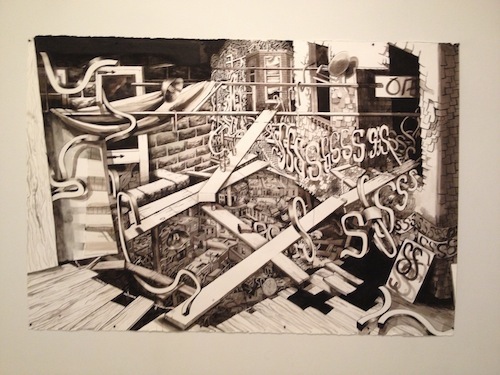 Amanda Burnham, SOS, Ink on Paper
Amanda Burnham, SOS, Ink on Paper
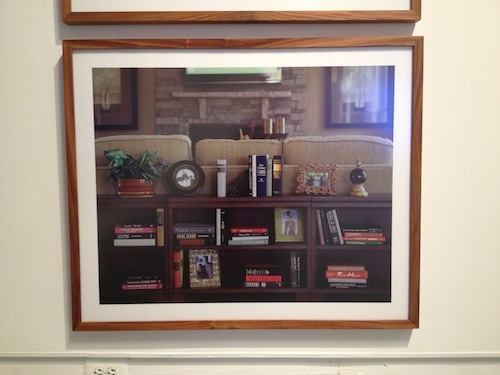 Kimberly Llerena, Model (bookshelf)
Kimberly Llerena, Model (bookshelf)
Hoesy Corona’s Scapegoat sculptures
 Model Home Sculptures by Marian April Glebes
Model Home Sculptures by Marian April Glebes
 Laura Amussen, Royal Pine (1700+ hand cut Pine scented air fresheners)
Laura Amussen, Royal Pine (1700+ hand cut Pine scented air fresheners)
Paintings by Curtis Miller
Melissa Webb
Sarada Conaway
 Photo series by Tatjana Pilitt
Photo series by Tatjana Pilitt
 Installation by Stewart Watson, Left and sculptural tables by David Knopp
Installation by Stewart Watson, Left and sculptural tables by David Knopp
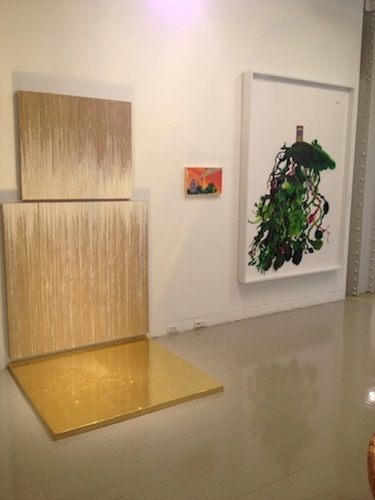 Jeff Hensley and Hadhieh Ilchi
Jeff Hensley and Hadhieh Ilchi
 Catherine Borg, Untitled from the Scouted Series
Catherine Borg, Untitled from the Scouted Series
 Jonathan Latiano’s Coronasphere
Jonathan Latiano’s Coronasphere







